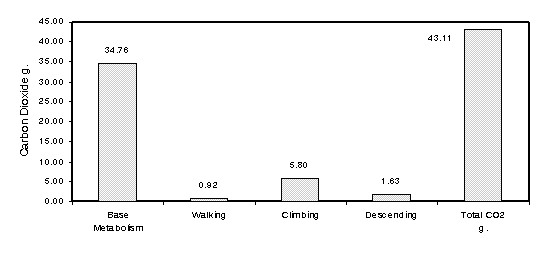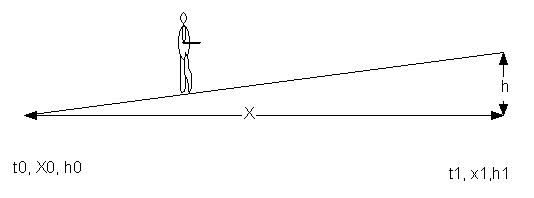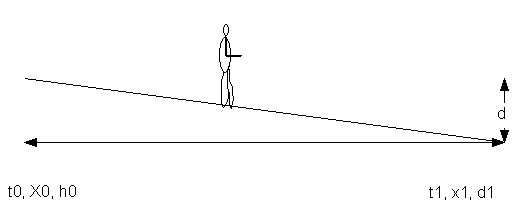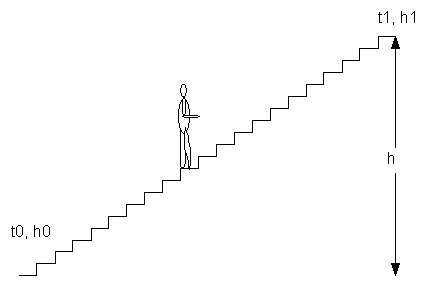Management of Carbon Dioxide in Show Caves
Abstract
A method based on published data of human performance has been developed to determine the metabolic output of a visitor on a cave tour. This method allows accurate assessment of the carbon dioxide and heat production as a function of the tour geometry. The method may be used to design a cave tour with minimum carbon dioxide impact. It is also useful to supplement the measurements of carbon dioxide needed to adequately monitor conditions in a cave. Remediation of carbon dioxide in caves is discussed.
Introduction
Carbon dioxide is of major importance in many of the processes that form and decorate caves. It is the major variable in most of the dissolution and deposition processes in limestone caves, and often has an important part to play in other gypsum, silicate and volcanic caves. It is exhaled by cave visitors, and so has become an important concern in the planning and management of show caves. It can also be generated by the decomposition of flood debris in caves and sometimes flows into caves from soil gas or a volcanic source. In extreme concentrations it can threaten the health of cave visitors.
There are not many show caves where it has been necessary to implement active management of the carbon dioxide. In the case of the few caves with levels of carbon dioxide which are dangerous to human health the problem is usually managed by not entering that part of the cave where the problem exists. What this paper is concerned with is planning for better management of carbon dioxide in caves, particularly the carbon dioxide exhaled by cave visitors.
To manage this problem in a show cave there are two parts to the strategy. The first is to measure and assess the magnitude of the problem. The second is to devise a plan for the management of the cave that gives an acceptable outcome.
To assist the first part of this strategy a model was developed to predict the carbon dioxide exhaled by visitors. The model can easily be applied to a show cave to estimate the carbon dioxide released on any tour that has a fixed path and time schedule. It may be of use to compare management options when designing tours. It also should be of use to reduce the cost and uncertainty of monitoring carbon dioxide in caves. When a clear pattern of release by visitors has been established, the incidence of carbon dioxide can be simply predicted by tour numbers and timing.
Human Carbon Dioxide Generation
There has been extensive research published on the subject of the human physiology associated with dietary input, metabolism, respiration and activity [1]. From this work there are many data connecting the type of activity being undertaken, metabolic heat generated, oxygen consumption and carbon dioxide expired. There is little variation in the performance of different people, trained athletes and out-of-condition people show similar respiratory efficiency [2].
Some of this data was investigated [3] and was arranged to show that for the types of task that visitors perform in a cave the performance of the human body is very predictable.
If a cave tour is analysed into sections of:
- walking,
- standing,
- climbing or
- descending,
then a simple calculation will give an estimate of the oxygen consumed, carbon dioxide expired and body heat generated for each section.
A Normal Visitor was calculated from published statistics [4 ] to represent an average of typical visitors, so the model only requires the number of people and the tour details to give quite accurate estimates of carbon dioxide generation, oxygen consumption and heat release during a tour.
The Normal Visitor here has been defined as a mean of five people, two male adults, two female adults and one child. This was based on the visitation records from Jenolan Caves, and is an approximation which will not seriously distort the result if it is inaccurate. Appendix 1 lists the method of calculation, which gives both carbon dioxide and metabolic heat released on a tour by the Normal Visitor.
The management of carbon dioxide in a cave may not be easy. Redesign of the tour schedule is the simplest strategy. Conducting the tour from a high entrance to a lower exit would reduce the work done climbing slopes or steps and reduce the carbon dioxide. Arranging the tour to pass right through the cave, rather than doubling back and retracing the path could nearly halve the problem. However, the time spent in the cave is the most important factor, as is shown by Figure 1 from a study of the Temple of Baal tour at Jenolan [3]. This is a tour with a lot of climbing (over 30 metres).

Figure 1. Carbon dioxide generated by the Normal Visitor on a Temple of Baal tour at Jenolan.
Modifying the climate of the cave by introducing fresh air or producing artificial air movement may be a way of controlling carbon dioxide concentrations, but this will probably cause other problems and a quite comprehensive analysis of the cave climate and the effects of changes to the climate would need to be undertaken before making such changes. One problem is the movement of heat and moisture that would accompany introduction of "fresh" air, another would be the introduction of dust into the cave.
There is much advice available from the heating, ventilating and air conditioning industry, (HVAC) but their methods and solutions are seldom able to take into account the special requirements of the cave environment.
Less invasive changes to cave climates need to be devised, like controlling existing air flows to minimise the carbon dioxide while retaining much of the character of the original cave climate. A number of solutions for particular caves have been devised, but as yet none has been implemented, as the caves seem to be able to continue to operate with the existing levels of carbon dioxide.
The best solutions are passive, no fans or power or controls. One method tried involved the erection of a curtain, which changes a frustrated bi-directional airflow to a two way flow, allowing more air to interchange with the surface. Sometimes the technology of the HVAC industry can be used, but in ways that would be considered very unusual in the industry.
Discussion
The method of calculation gives a quantity of carbon dioxide released in the cave. The obvious management question is what is the limit of carbon dioxide that can be allowed to accumulate in a cave for the good management of the cave?
The answer is that the less the better, but that even quite high levels may not damage the cave, and the comfort of the visitors may be deciding factor. The air in buildings is often controlled to have a level of no more than 0.1% carbon dioxide. But this level was chosen to avoid staleness in recirculated air and to limit the accumulation of body odour from the occupants. A maximum level often used by industry for healthy working conditions is 0.5% carbon dioxide, this is usually a level caused by a process other than the respiration of the workers. The natural background level is about 0.035%.
There is an Australian show cave with a level of about 2% carbon dioxide, due to natural processes, and this cave contains active speleothems of the highest quality with no sign of damage due the atmosphere. Consideration of this case raises a serious question about the often quoted limit of 0.24% carbon dioxide as the threshold of damage to cave surfaces, suggested by Kermode [2] who produced little solid evidence to support this number.
It is quite possible that the effects observed by Kermode were due to dust deposits on the surfaces. Any cave that has an increase of 0.24% carbon dioxide due to visitors, has such a level of visitation that dust deposition will be a serious problem. The decomposition of the organic component of dust from visitors on a calcite surface is quite likely to cause corrosion at any level of ambient carbon dioxide. The contribution to micro-organisms to corrosion and deposition on cave surfaces has previously been neglected and is only starting to be fully realised.
There is a natural conflict that occurs in show caves, the atmosphere should not be modified if the cave is to be preserved, but a high level of visitation in small or poorly naturally ventilated caves will result in changes to the atmosphere that in public buildings might be considered unacceptable. The model presented here can be used to plan the development or redevelopment of a cave to minimise the problems associated with air quality.
There are still questions to be answered about the fate of carbon dioxide in show caves, does it exit from the entrance by mixing with the cave air and forming part of the air that leaves the cave or does it dissolve in moisture on the walls, and form part of the solution / dissolution process?
Two possible strategies for carbon dioxide control are to: 1/. Manage the generation and distribution of carbon dioxide, 2/. Remove the carbon dioxide and/or replace with fresh air.
If the second approach is taken using HVAC solutions there is need for careful control of the condition of the air (temperature humidity and dust content) control of noise, bacterial control (legionella) and to make the task more difficult, the desirable conditions may not be constant but varying to suit variation in external conditions.
Conclusion
The quantity of carbon dioxide that will be generated in a show cave by the cave tours can be accurately estimated by the model presented. The desirable limits of carbon dioxide in a cave are not clearly defined, and values quoted in the past may have suffered from lack of understanding of other processes. Any deliberate modification of the air flow in a cave should be preceded with a careful analysis of the cave climate, and dust may be a serious consideration.
APPENDIX
Calculation of Carbon Dioxide and Heat from a Cave Tour
From the data of [4] Snyder et al (1974), an average based on the proportions of two adult males, two adult females and one child gave a definition of the "normal visitor", of 58.2 kg mass and 1.58 m2 surface area.

The statistics for average people. [4]
The energy E expended by a Normal Visitor and the carbon dioxide expired can be accurately estimated by the following formula:
E = (t - t0)*107.8 + (x - x0)*(x - x0)*84.8/(t-t0) + 4*58.2*g*(hu-hu0) + 58.2*g*(hd-hd0) Joules ..................... Equation 1
where t0, t are the times (in seconds) at the start and the
end of the task,
x0, x are the horizontal distance at the start and end of
the task, (m)
hu0, hu are the vertical distance at the start
and finish of climbing, (m)
hd0, hd are the vertical distance at the start and finish
of descending, (m)
m is 58.2 kg, the weight of the Normal Visitor and
g the local value of gravity = 9.8ms-2.
The energy E is then multiplied by the energy-carbon dioxide coefficient
of 79.6*10-6 g J-1.
To apply the formula to a cave tour, the task must be broken into its component parts, of walking over a given distance, waiting for a given time, walking down slope, walking up-slope, climbing and descending.

Figure 2 The measurements needed for walking on level or upwards sloping paths.

Figure 3 The measurements needed for horizontal or downwards sloping paths.

Figure 4 The measurements needed when climbing

Figure 5 the measurements needed when descending.
When there are steps and climbing, the walking velocity becomes irrelevant so the x values are zero, and similarly when there are steps and a descent is made.
References
[1] McIntyre, D. A. (1980) 'Indoor Climate'. Applied Science Publishers Ltd. London Pp. 443
[2] Knehr, C. A., Dill, D. B., and Neufeld, W. (1942) 'Training and its effects on man at rest and work'. American Journal of Physiology Vol. 136 pp. 148-156
[3] Michie, N.A. (1997) "An Investigation of the Climate, Carbon dioxide and Dust in Jenolan Caves, N.S.W." PhD Thesis Macquarie University. Pp 298
[4] Snyder, W. S., Cook, M. J., Nasset, E. S., Karhausen, L. R., Howells, G. P., and Tipton, I. H. (1974) 'Report of the Task Group on Reference Man'. Published for: The International Commission on Radiological Protection. Report no. 23. Permagon Press Oxford. pp. 8-21
[5] Kermode, L. O. (1979) 'Cave Corrosion by Tourists'. in presentation to 3rd Australian Conference on Cave Tourism and Management, Mt. Gambier, SA, May 1979 pp. 9